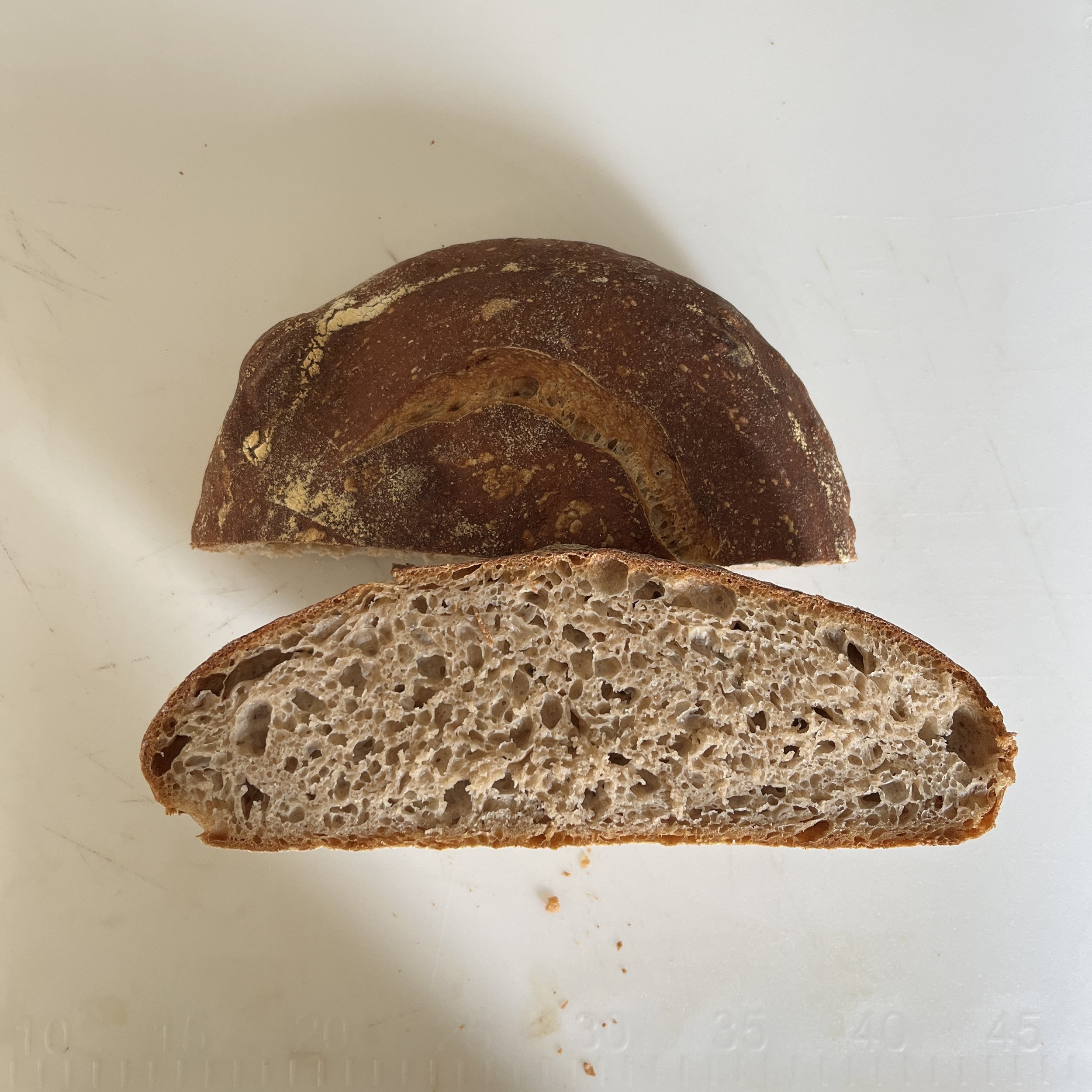‘A loaf of bread,’ the Walrus said, ‘is what we chiefly need: Pepper and vinegar besides are very good indeed.’ - Lewis Carroll
h2oI am quite happy with the color and the crust I have been getting with 25 minutes top on, 25 minutes top off. Unfortunately, this loaf is a little flat, Rin says it could be one of two things, either it’s because I was using two cast iron pans, a deep one upside down, and a shallow one right side up, or I didn’t heat the oven enough as the initial hit of heat is what causes the gasses in the loaf to expand giving it spring. I think it’s a little of both, maneuvering a cast iron pan heated to ~500°s upside down in an oven isn’t simple, nor when I’m trying to move quickly so I let as little heat out as possible. And I baked shortly after the reached 500°, which doesn’t mean the cast iron was that hot, or the oven was, considering ovens aren’t always accurate. I need to document things a little better so I can help myself out and have a set of steps to follow.
Shortcomings aside, this was a nice loaf of bread, a little hobbit-y in height, but there’s nothing wrong with that, great for toasting and dipping in tomato compote or making panzanella with, or eating and not worrying about it. I’ve settled more or less on 20% whole wheat, 80% hydration, 2% salt for now, not because I think that is correct or anything, but because I’m trying to refine my technique and that’s easier when I’m not messing with the hydration and wondering why this loaf is so much stickier than the last one and how to handle that and so forth.
80% hydration is great, when I turn and fold it I wet my hands, the hard scraper, and the surface (slightly) initially so that it doesn’t stick. I’m not sure if wetting the surface is a wise move or approved by Real Bakers™ but it works for me for now. I’m still letting the levain run overnight, auto-lysing for two hours the next morning, then mixing the levain and auto-lyse, adding salt, waiting for ten minutes before incorporating air by mixing for five minutes, waiting another 15 minutes, mixing for a second time another five minutes, then folding every half hour. Rin told me to mix no more than four times, as after that you start knocking out air, admittedly I’ve been mixing every half hour all day for the past few loaves so I’ll take his advice and only do four mixes going forwards. Bulk at “room temperature” - which is low 60s, final overnight in the fridge. Bake for 25 minutes at 450 top on, 25 minutes more top off, let rest 20 minutes or more, cut, and eat with much butter.
Additionally, I decided to use a razor to score the top of this loaf, not that it looks like it, but at Rin’s insistence I decided to use a razor he gave me.
Dough
400 g bread flour (Central Milling Brand Organic)
100 g whole wheat flour (Central Milling Brand Organic)
400 g h2o
80% hydration
10 g salt
Levain
10 g starter
50 g all purpose flour (Central Milling Brand Organic)
50 g h2o
What I did right:
The crumb is nice and open, if regular, and I used a bit more water with the hard scraper so it didn’t stick while I was folding and shaping.
What I did wrong:
I didn’t heat the oven enough and didn’t make sure the pans sealed when I baked the loaf.
What I learned:
Heat the oven to 550, check the temperature of the dutch oven when I put the loaf in, focus on the details.


